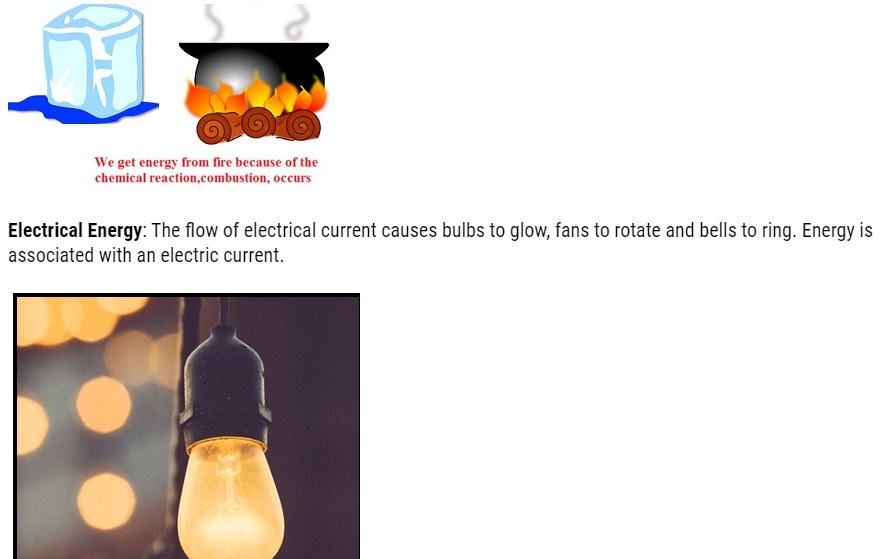About Lesson
Chemical Energy:
- Chemical energy arises from the fact that the molecules participating in the chemical reaction have different binding energies.
- If the total energy of the reactants is more than the products of the reaction, heat is released and the reaction is said to be an exothermic reaction.
Example- When you freeze water you remove energy from water to lower its temperature and its phase is changed to ice, so it is a exothermic process - If the reverse is true, heat is absorbed and the reaction is endothermic.
Example- While melting the ice you provide energy to the ice to increase its tempreature and change its phase to water, so it is a endothermic process.

Nuclear Energy:
- The energy released from the nuclear reactions, either fission or fusion, is called as nuclear energy.
- Nuclear fusion and fission are manifestations of the equivalence of mass and energy.
- In fusion light atom nuclei like Hydogen fuse to form a bigger nucleus whose mass is less than the sum of the masses of the reactants.
- In fission, a heavy nucleus like uranium 235U92 , is split by a neutron into lighter nuclei. Once again the final mass is less than the initial mass and the mass difference translates into energy.
